Tianchan Guan
Predicting the Output Structure of Sparse Matrix Multiplication with Sampled Compression Ratio
Jul 28, 2022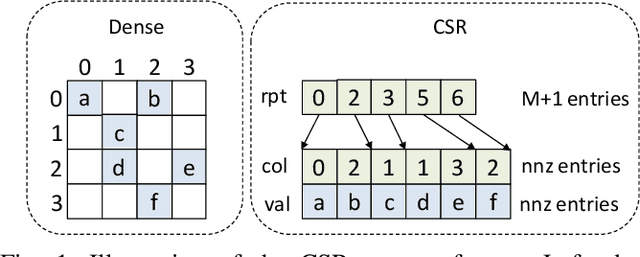
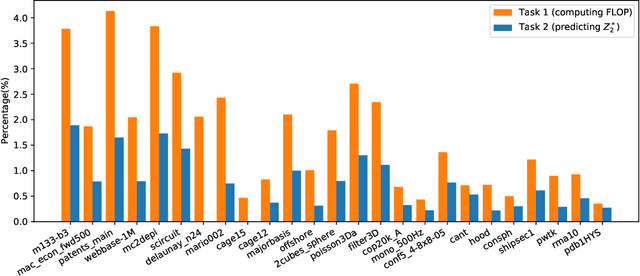
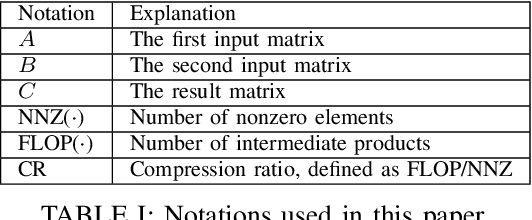
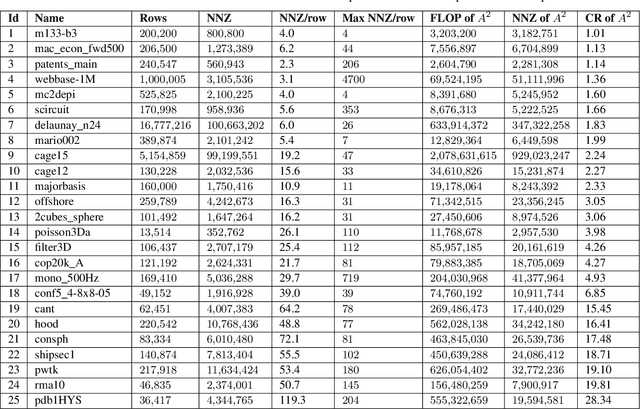
Abstract:Sparse general matrix multiplication (SpGEMM) is a fundamental building block in numerous scientific applications. One critical task of SpGEMM is to compute or predict the structure of the output matrix (i.e., the number of nonzero elements per output row) for efficient memory allocation and load balance, which impact the overall performance of SpGEMM. Existing work either precisely calculates the output structure or adopts upper-bound or sampling-based methods to predict the output structure. However, these methods either take much execution time or are not accurate enough. In this paper, we propose a novel sampling-based method with better accuracy and low costs compared to the existing sampling-based method. The proposed method first predicts the compression ratio of SpGEMM by leveraging the number of intermediate products (denoted as FLOP) and the number of nonzero elements (denoted as NNZ) of the same sampled result matrix. And then, the predicted output structure is obtained by dividing the FLOP per output row by the predicted compression ratio. We also propose a reference design of the existing sampling-based method with optimized computing overheads to demonstrate the better accuracy of the proposed method. We construct 625 test cases with various matrix dimensions and sparse structures to evaluate the prediction accuracy. Experimental results show that the absolute relative errors of the proposed method and the reference design are 1.56\% and 8.12\%, respectively, on average, and 25\% and 156\%, respectively, in the worst case.
Recursive Binary Neural Network Learning Model with 2.28b/Weight Storage Requirement
Sep 15, 2017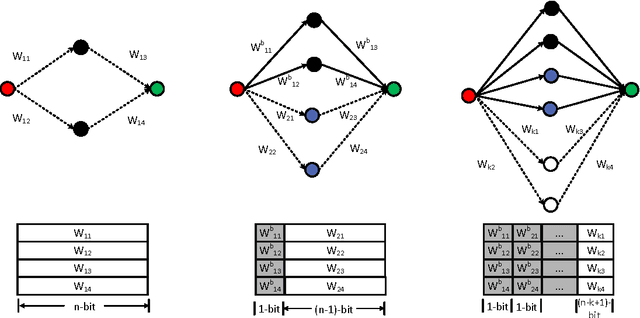
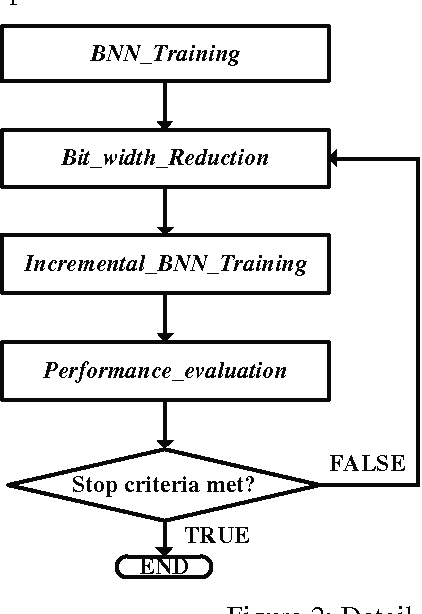
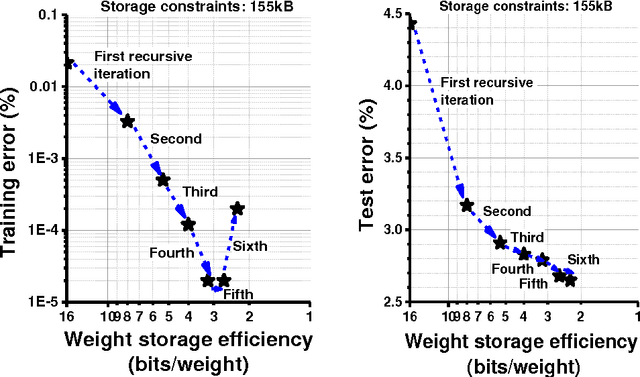
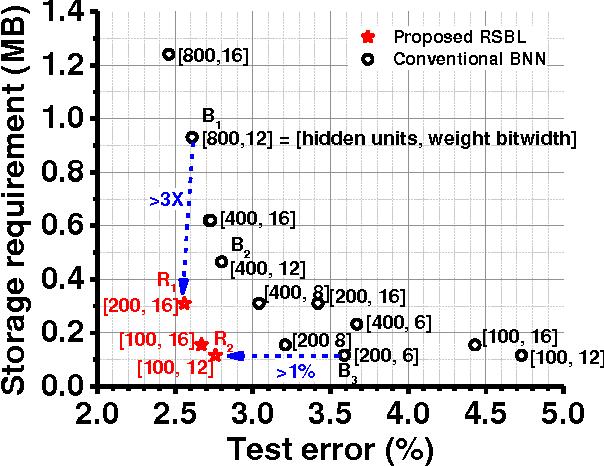
Abstract:This paper presents a storage-efficient learning model titled Recursive Binary Neural Networks for sensing devices having a limited amount of on-chip data storage such as < 100's kilo-Bytes. The main idea of the proposed model is to recursively recycle data storage of synaptic weights (parameters) during training. This enables a device with a given storage constraint to train and instantiate a neural network classifier with a larger number of weights on a chip and with a less number of off-chip storage accesses. This enables higher classification accuracy, shorter training time, less energy dissipation, and less on-chip storage requirement. We verified the training model with deep neural network classifiers and the permutation-invariant MNIST benchmark. Our model uses only 2.28 bits/weight while for the same data storage constraint achieving ~1% lower classification error as compared to the conventional binary-weight learning model which yet has to use 8 to 16 bit storage per weight. To achieve the similar classification error, the conventional binary model requires ~4x more data storage for weights than the proposed model.
 Add to Chrome
Add to Chrome Add to Firefox
Add to Firefox Add to Edge
Add to Edge